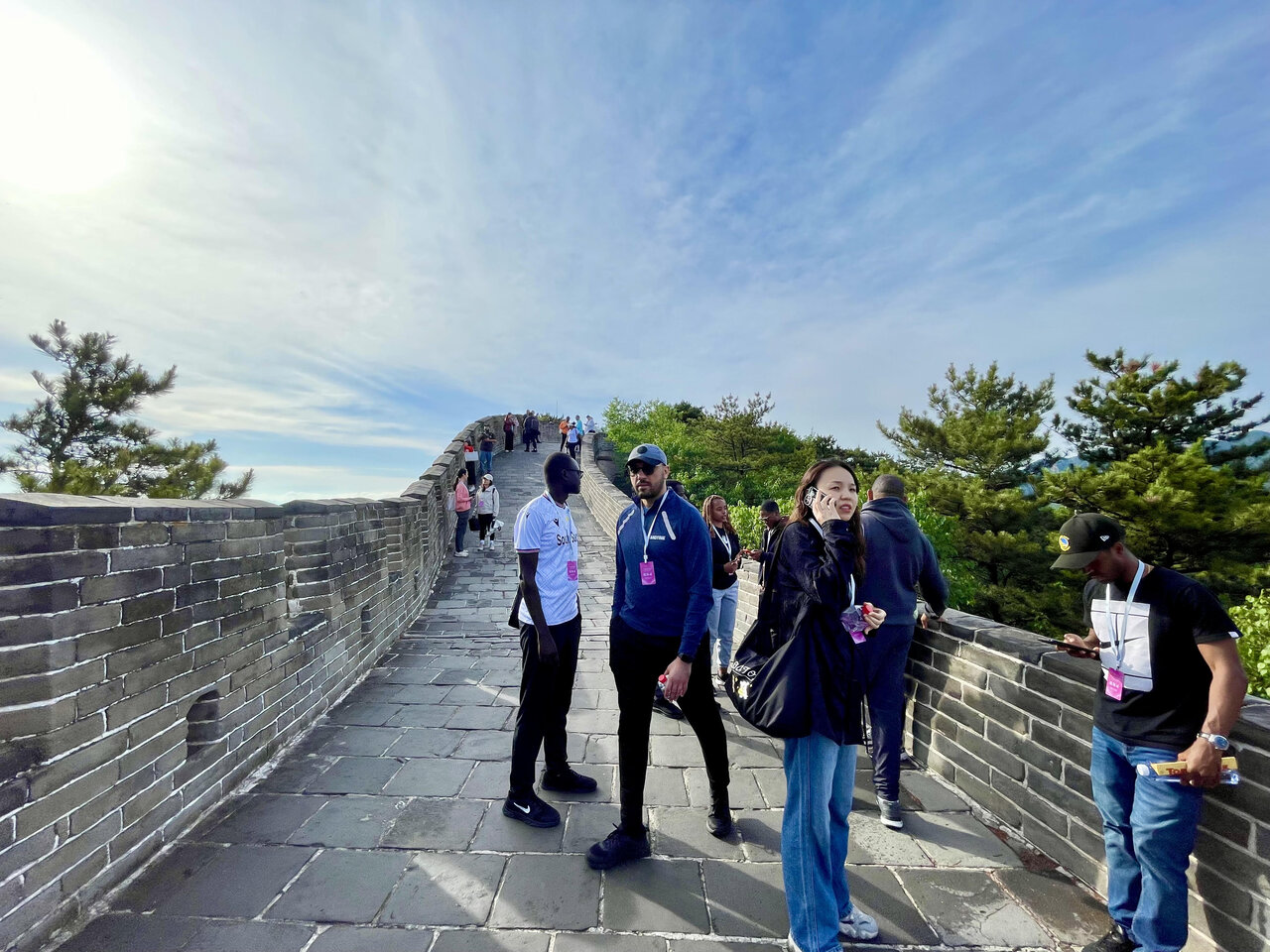Great Wall of China amazes international journalists again

BEIJING- Almost 100 journalists from some Asian, African, European, Latin American, and Oceanic countries, who are participating in a four-month program arranged by the China International Press Communication Center (CIPCC), visited the Great Wall of China for the second time during their stay in Beijing.
The group of foreign journalists embarked on a memorable journey to explore one of the world’s most iconic landmarks the Great Wall of China in an evening with pleasant weather.
Many Chinese journalists, photographers, and broadcasters accompanied the journalists in their wonderful experience in the Great Wall, which resulted in a number of very interesting interviews, videos, and photos.
The journalists themselves took many selfies and also group photos during their great journey in the Great Wall.
The Great Wall of China was built over centuries by China’s emperors to protect their territory. Today, it stretches for thousands of miles along China’s historic northern border.
For millennia, Chinese leaders instituted wall-building projects to protect the land from northern, nomadic invaders. One surviving section of such an ancient wall, in the Shandong province, is made of hard-packed soil called “rammed earth” and is estimated to be 2,500 years old. For centuries during the Warring States Period, before China was unified into one nation, such walls defended the borders.
Around 220 B.C.E., Qin Shi Huang, also called the First Emperor, united China. He masterminded the process of uniting the existing walls into one. At that time, rammed earth and wood made up most of the wall. Emperor after emperor strengthened and extended the wall, often with the aim of keeping out the northern invaders. In some places, the wall was constructed of brick. Elsewhere, quarried granite or even marble blocks were used. The wall was continuously brought up to date as building techniques advanced.
Zhu Yuanzhang, who became the Hongwu Emperor, took power in 1368 C.E. He founded the Ming Dynasty, famous for its achievements in the arts of ceramics and painting. The Ming emperors improved the wall with watchtowers and platforms. Most of the familiar images of the wall show Ming-era construction in the stone. Depending on how the wall is measured, it stretches somewhere between 4,000 and 5,500 kilometers (2,500 and 3,400 miles).
In the 17th century, the Manchu emperors extended Chinese rule into Inner Mongolia, making the wall less important as a defense. However, it has retained its importance as a symbol of Chinese identity and culture. Countless visitors view the wall every year.
As earlier mentioned, this visit and also the first visit of the world journalists to the Great Wall was organized by the China International Press Communication Center (CIPCC).
CIPCC, under the China Public Diplomacy Association (CPDA), has initiated a program to build a platform for the media from countries around the world, especially developing countries, to observe China and study development in this country.
In each edition of the program, journalists from all around the world gather together to get familiar with the modern China and exchange their experiences in the field of journalism.
In 2024 edition of the program, started in late February, over 100 journalists from more than 90 countries are participating.
Photo By Mahnaz Abdi
Leave a Comment